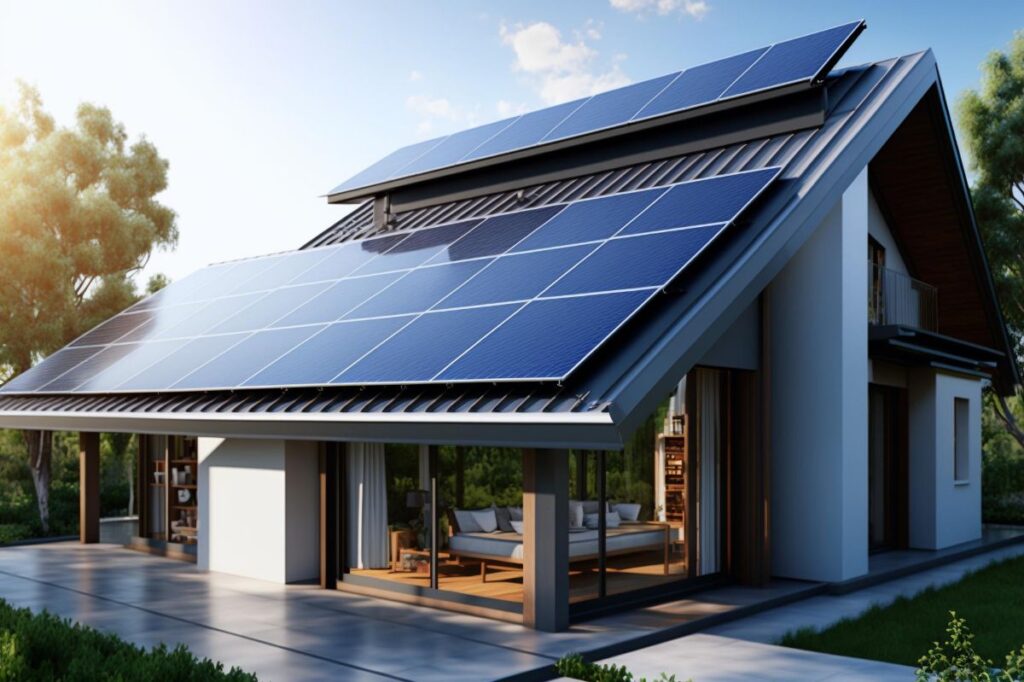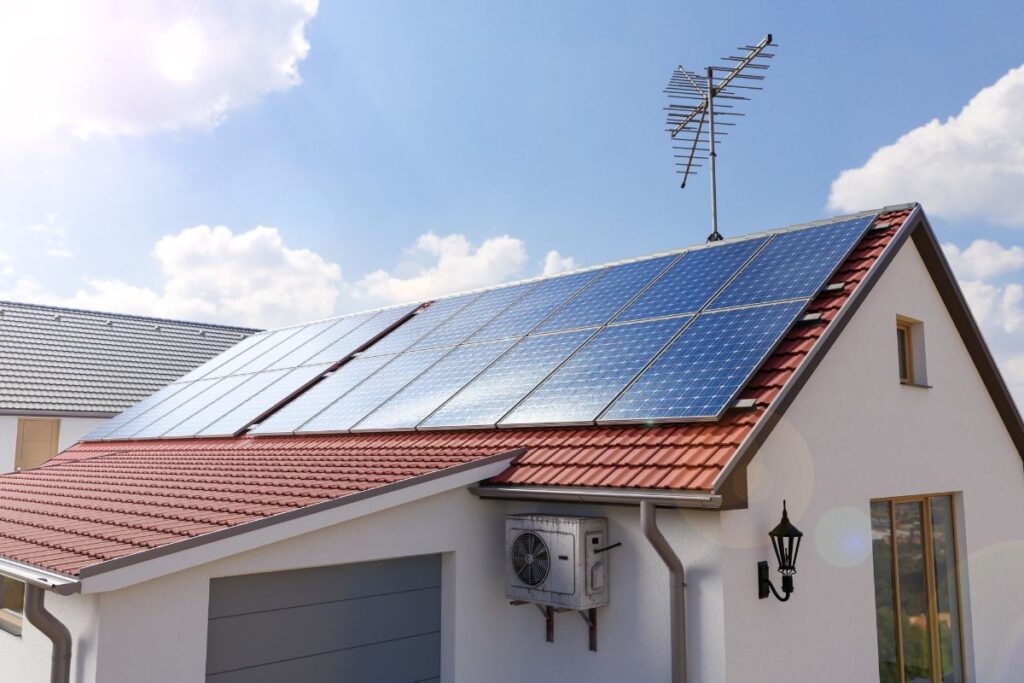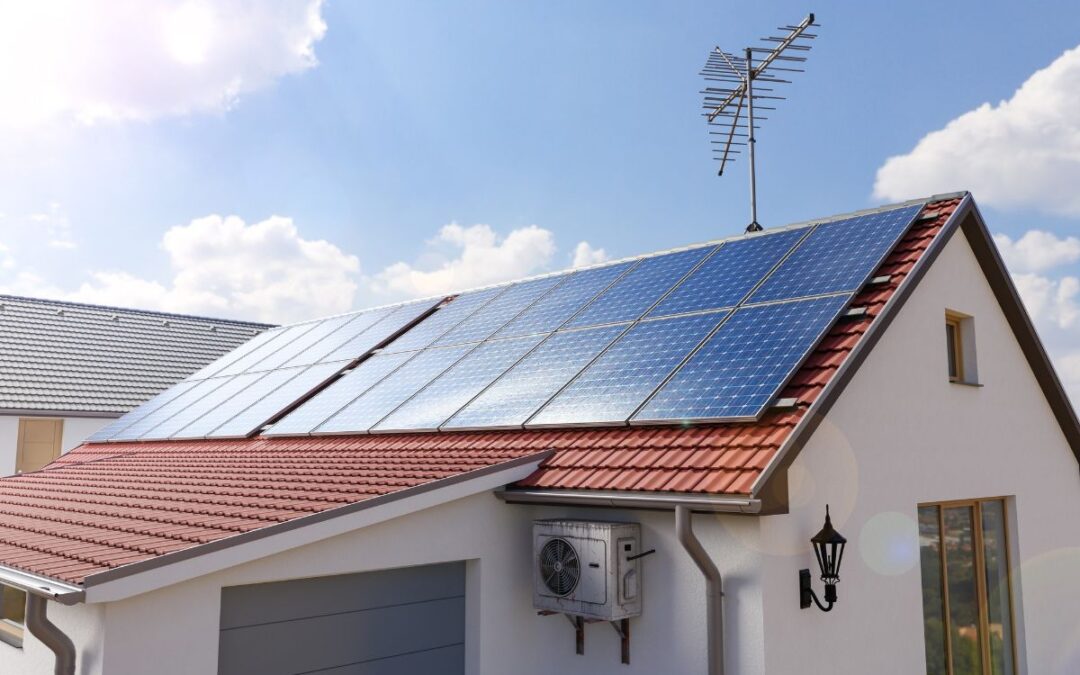What is Green Energy?
Imagine waking up to a sunny day, knowing it’s not just warming your face, but powering your entire house. Green energy is the future, and solar panels play a pivotal role in this transition. These sleek, photovoltaic marvels convert sunlight into electricity, reducing our reliance on fossil fuels and minimizing our carbon footprint.

How Do Solar Panels Work?
Solar panels operate through the photovoltaic effect. Each panel comprises photovoltaic cells, tiny semiconductors that convert sunlight into electricity. Inverters then transform this direct current (DC) electricity into usable alternating current (AC) power for your home. While different types of panels exist (monocrystalline, polycrystalline, and thin-film), they all harness the sun’s energy for a brighter future.
The Different Types of Solar Panels
There are three main types of solar panels available today: monocrystalline, polycrystalline, and thin-film.
- Monocrystalline solar panels: These panels are made from single crystals of silicon, which gives them a uniform appearance and makes them the most efficient type of solar panel. They are also the most expensive type of panel.
- Polycrystalline solar panels: These panels are made from multiple crystals of silicon, which gives them a more mottled appearance. They are less efficient than monocrystalline panels but also less expensive.
- Thin-film solar panels: These panels are made from a thin layer of photovoltaic material deposited on a substrate, such as glass or plastic. They are the least efficient type of panel, but they are also the most lightweight and flexible, making them a good choice for some applications.
Comparison of Solar Panel Types
| Feature | Monocrystalline | Polycrystalline | Thin-Film |
|---|---|---|---|
| Cell Material | Single silicon crystal | Multiple silicon crystals | Amorphous silicon, cadmium telluride, etc. |
| Efficiency | Highest (18-22%) | Moderate (15-17%) | Lowest (10-15%) |
| Temperature Coefficient | Lower | Higher | Higher |
| Light Sensitivity | Performs better in low-light conditions | Performs moderately in low-light conditions | Performs poorly in low-light conditions |
| Appearance | Uniform black | Blue or multi-colored | Black or dark brown |
| Cost | Highest | Moderate | Lowest |
| Weight | Heaviest | Moderate | Lightest |
| Durability | Most durable | Less durable | Least durable |
| Availability | Widely available | Widely available | Less available |
| Best suited for: | High-efficiency applications, limited roof space | Moderate-efficiency applications, larger roof space | Low-cost applications, irregular roof shapes |
The Technologies Behind Solar Panels
Solar panels convert sunlight into electricity using a process called the photoelectric effect. When sunlight hits a solar cell, the energy from the photons knocks electrons loose from their atoms. These electrons can then flow through a circuit, creating electricity.
There are two main types of solar cells used in solar panels: crystalline silicon and thin-film.
- Crystalline silicon solar cells: These are the most common type of solar cell, and they are made from silicon wafers. They are very efficient, but they can be expensive to produce.
- Thin-film solar cells: These cells are made from a thin layer of photovoltaic material deposited on a substrate. They are less efficient than crystalline silicon cells, but they are also less expensive and more flexible.
Which Type of Solar Panel is Right for You?
The best type of solar panel for you will depend on your individual needs and budget. Here are some factors to consider:
- Your budget: Monocrystalline panels are the most expensive, followed by polycrystalline and thin-film.
- Your energy needs: If you have high energy needs, you will need more efficient panels, such as monocrystalline or polycrystalline.
- Your roof space: If you have limited roof space, you may need to choose more efficient panels, such as monocrystalline or thin-film.
- Your aesthetics: Monocrystalline panels have a uniform appearance, while polycrystalline panels have a more mottled appearance. Thin-film panels can be made in a variety of colors.
Solar Panel Installation Process
1. Initial Consultation and Site Assessment:
Schedule a consultation to discuss your energy needs, budget, and goals with them. After the consultation, the installer will conduct a site assessment, evaluating your roof structure, sun exposure, and potential shading to ensure an accurate and effective energy solution tailored to your specific circumstances.
2. System Design and Permitting:
Following a thorough assessment of your requirements and site conditions, the installer will design a tailored solar system to meet your specific needs. Proceed to gather quotes and compare options, taking into account factors such as panel type, efficiency, and inverter brand. Ensure compliance with local regulations by securing the necessary permits for installation, a process the installer can assist you with.
3. System Installation:
Prepare your roof by making minor adjustments such as adding structural support or removing obstructions as needed. Secure brackets and rails are then used for the panel mounting, ensuring a firm placement on your roof. Qualified electricians handle the electrical wiring, connecting the panels to your home’s electrical system. Lastly, install the inverter, which plays a crucial role in converting DC power generated by the panels into usable AC power for your home.
4. System Inspection and Activation:
After the installation, qualified professionals conduct safety and performance checks to ensure the system’s proper functionality. Connect your system to the utility grid for the ability to feed excess energy back. Implement monitoring systems to track both energy production and consumption, providing valuable insights into the performance of your solar setup.

Solar panels don’t work on cloudy days?
It’s a common misconception that solar panels don’t work on cloudy days! While their efficiency does decrease compared to sunny days, they can still generate a significant amount of electricity even under cloudy skies. Here’s the breakdown:
- Direct sunlight: On a clear day, sunlight directly hits the panels, maximizing their efficiency and generating the most electricity.
- Cloudy days: When clouds are present, they diffuse the sunlight. While less sunlight reaches the panels, it’s still enough to trigger the electricity generation process.
- Amount of electricity generated: Depending on the cloud cover, solar panels can produce anywhere from 10% to 80% of their normal output on cloudy days. Even on heavily overcast days, they can still generate some electricity.
In summary, solar panels are a great way to generate clean, renewable energy for your home or business. With so many advancements in solar technology happening all the time, the future of solar energy is bright!
